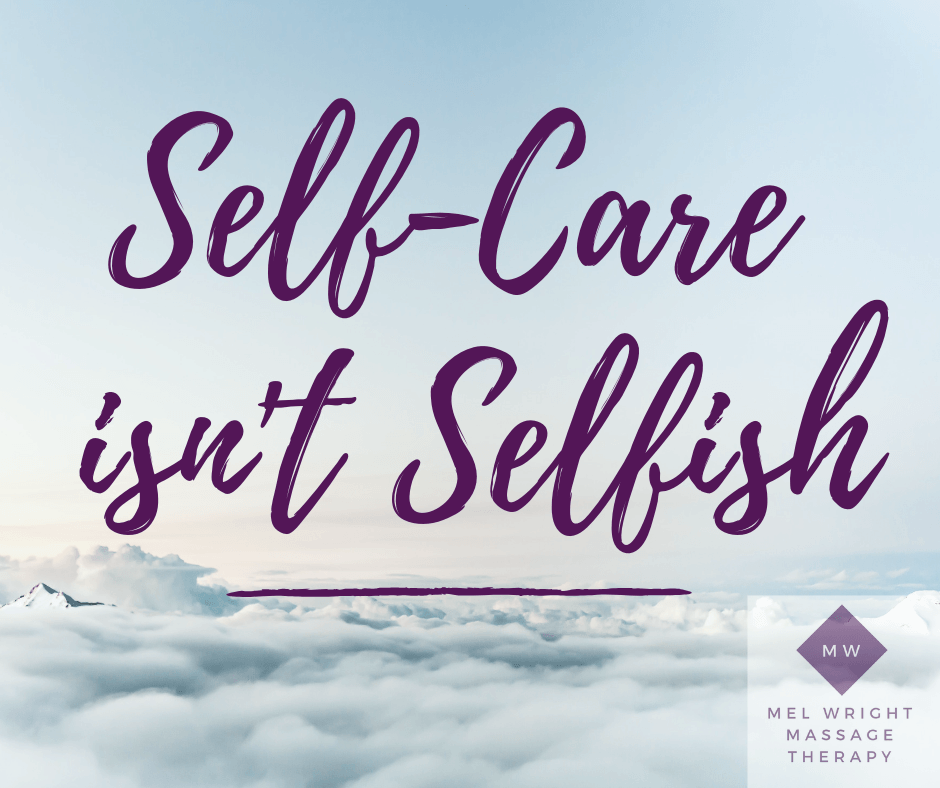
Over the last week or so I’ve seen several articles about self-care, most of them positive and several social media postings about the same, largely negative. So, what is self-care and what does it mean for us?
At is most basic, self-care is about taking an active role in protecting your own well-being and happiness, in particular during periods of stress. Easy to see why there’d be plenty of positivity around that, but why the negativity on social media? Because one person’s self-care is perceived as another’s indulgence and on social media some people are more than happy to point that out!
It was the Huff Post’s article earlier today on whether s elf-care is a solution to men reaching burnout that prompted me to find some time between appointments to talk about it. Why? Well in my line of work I’m a part of many people’s self-care activities, whether that’s a conscious decision or not. But one thing about the article in particular struck a chord with me – the focus on men and our reluctance to do self-care. The article itself acknowledged that some of us find it “too girly” or we don’t want to be seen as needing to take care of ourselves. Whilst I have a roughly 50:50 gender split in my clients what I am seeing is that for the initial appointment fewer men are taking the step themselves to book in, but their partners are getting in touch, setting out the problems their partner has (largely related to physical work), booking them in and sending them to me. Once here they soon see that massage isn’t a fluffy self-indulgence, but something that can help them look after themselves better. I’m even helping create a few male yoga converts too, it helps both the mind and body and while for now most of us haven’t got the confidence to get social with yoga in a class (YouTube videos in our living rooms) for the one’s who do The Wholesome Apple ’s classes come highly recommended.
There is no single viewpoint on the best self-care ideas, because not everyone gives the same importance to all self-care activities.
For example, my wife views an afternoon of digging/planting/other gardening activity at our allotment as one of the most relaxing and at the same time invigorating experiences in her life. Spending time there, hands in the mud, encouraging life from a tiny seed provides balance for her, and gives her energy to face many challenges. But when I’m round there helping out, it actually builds tension in my body and mind, mainly because I know I‘m in for a few days of pain from my sciatica so the whole process annoys me and leads to tension; not something you want from self-care. So for my wife gardening is one of the best self-care ideas in the world, but personally I would never put that on my personal list of self-care activities. Mine includes: the occasional massage, yoga, reading a good book, making something previously messy tidy, listening to music that brings back happy memories and going for a good walk. Some days/weeks those things change and I need to do other things, but they’re at the core of my self-care activities.
This, of course, adds to the complexity of self-care. There is no one formula for caring for you. Just because one form of self-care works for me doesn’t mean it will help others, and so as well as massage which I think is one of the best forms of self-care for both the mind and body, I’ve tried to find a self-care ideas listwhich is as detailed as possible, filled with lots of self-care activities. I wanted to include as many options as possible for people to choose from. That way, people are free to ignore the ideas that don’t excite them and focus on the self-care ideas that actually make a difference in their well-being.
I hope you find something on there that helps you embrace your own self-care, and if that happens to be massage why not give me a call to book in.
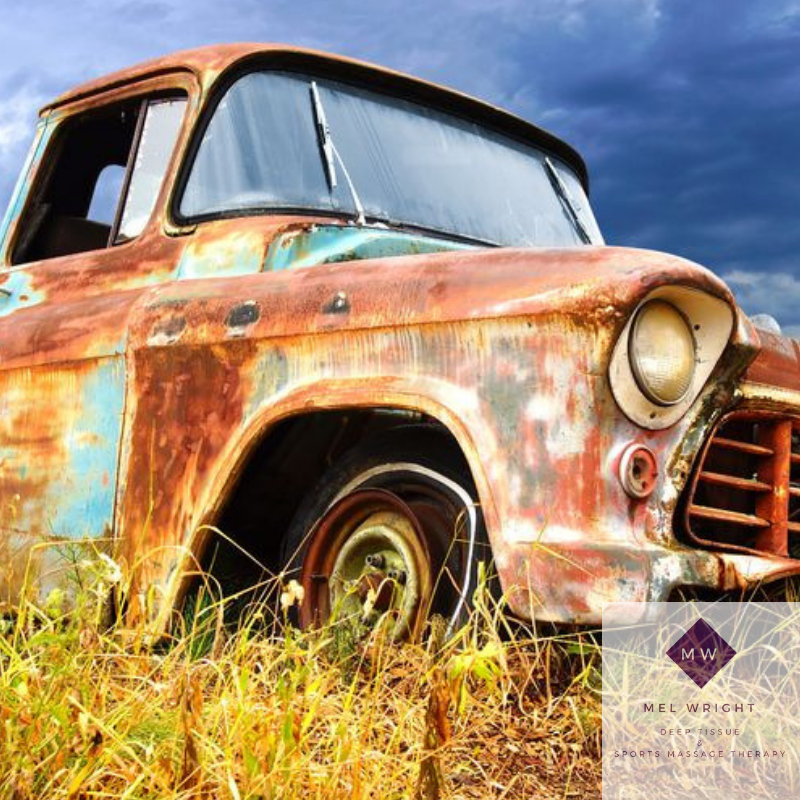
Once a car gets to three years old we wouldn’t dream of driving it without giving it an MOT, and quite often a service too. Why? We want to ensure it’s roadworthy, capable of doing all the things we need it to and not about breakdown on us with an easily fixable problem that just needs someone look at it, tinker with it a bit and fix it.
What if you could do the same for your body? At Mel Wright Massage Therapy, you now can…
An MOT massage is an hour or 90-minute appointment to check the general state of the muscles you’ll be using while you’re training or that you use day-to-day. In an MOT Massage we try to cover as much as possible to give you a full picture of where your muscles are tight and overworked and/or of any imbalances in muscle tone or tension. Armed with this information, you can adjust your stretching routine or check your technique to help you improve and hopefully prevent injury. We can also use this information to inform your treatment in future Deep Tissue, Sports or Relaxation Massage appointments you may have with us.
Each appointment starts with an assessment and a review of what you’re training for, or what you’re planning to do, so we know which muscles to look at. During the appointment you’ll get a commentary on what’s tight, what’s loose and the possible implications. You don’t need to be an athlete for an MOT Massage – it can be useful for occupational tension as well. To give you a better idea, here are a couple possible examples, one for a runner and one for an office worker:
Example MOT Massage for a Runner (aka Sports-Related MOT)
Let’s say you’re a runner. You’ve taken it a bit easy recently but you’ll be starting to train for an event and increasing your mileage. We’ll talk to you to get an idea of your training program, including any non-running activities you do.
Once you’re on the table, we’ll cover the basics: quads, hams, calves, ITB’s, achilles, glutes. Some runners get lower back pain or neck and shoulder pain while they run, so if that’s you we’ll try to check that as well. What might we find? Well, did you know most runners don’t use their legs equally? It’s not uncommon to find one leg is generally tighter than the other, which can eventually lead to fatigue, soreness, or even injury on that side. If we find this is the case for you, we’ll let you know and you can keep an eye on your running style and make sure you stretch out your ‘lead’ side. And that’s just one example.
Of course, there is always the possibility that your stretching and conditioning routines are comprehensive and your technique is excellent. If we don’t feel any significant tension we’ll let you know. You may be surprised, however – there have been a number of clients who came in just because they heard sports massage was good generally, and walked out feeling lighter, looser, and reporting better results with less effort at subsequent training sessions.
Example MOT Massage for the Office Worker (aka Occupational MOT)
You may not realise how much sitting in one place for an extended period of time can fatigue/tighten up your muscles. People who spend a long time at a desk often develop a semi-permanent hunch, with shoulders rounded forward and head slightly in front of shoulders; they sit, frozen, holding you up for hours on end, usually not in an optimal position. Muscles in a shortened state become tight, while stretched, overworked muscles become strained. The stiffness slowly translates into restriction, until one day your shoulder hurts putting on your shirt, or turning your head produces a sharp pain in your neck. The MOT Massage for the office worker is about nipping this in the bud.
We again start with a conversation to get an idea of your routine, even if that is just 10 hours at a desk. Usually office workers need focus on the upper body and back, so an MOT Massage for you would include tops and backs of shoulders, upper and lower back, chest (as in, pectorals), neck and base of the head. We also like to check for tight forearms and stiff hands/wrists (RSI anyone?). Again, we will tell you as we go, what’s tighter, what’s looser and possible implications. Hopefully after your MOT Massage you’ll have a better understanding of what your muscles are doing while you’re stationery and a few simple fixes to make it easier to ward off later problems.
In addition to office workers, we’ve found ‘occupational’ MOT’s can be helpful to teachers, those in the construction industry, students, drivers and cleaners, to name a few. Any sort of work that is repetitive, or requires holding yourself in one position for a prolonged period of time, can cause an imbalance in the muscles, which is where the occupational MOT massage comes in.
Other MOT Massages
These are just two examples of MOT Massage. An MOT Massage can be useful for anyone who wants to see how their muscles are doing. You can have an MOT Massage every once in a while to check in, or you can make it a regular thing and turn it into a maintenance massage. If you would like more information about an MOT Massage for yourself we are happy to provide information specific to you. Just get in touch using your preferred contact method and we’ll get back to you as soon as we can.
Prices/How to book an MOT Massage
The prices for an hour or 90-min MOT Massage are £33 for an hour or £45 for 90 minutes. To book an MOT Massage, you can get in touch through all the usual routes:
· Use the form on the Contact page
· Drop me an email
· Give me a call on 07971 654608
· Or book your appointment directly online.
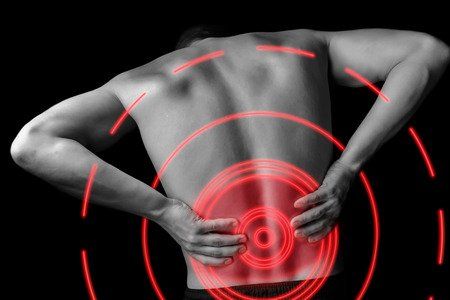
September is International Pain Awareness Month and to mark this BBC Three has spoken to three people about their conditions and how they try to cope; you can read their stories here.
Bringing the topic a bit closer to home, there's a huge chunk of 2008/09 that I have no real recollection of. I'd suffered back pain and sciatica on and off for years, but when a huge storm over Easter 2008 removed an ancient ivy bush from out back garden wall I managed to rupture a disc in my back trying to chop it up, heaving sections of it out of the way so that we had access to and from the garden again. I tried to tough it out thinking it would ease given time but it didn't and I ended up on a cocktail of anti-inflammatories and painkillers for months eventually weaning myself off them after the maximum dose of 3 steroid injections just in time to get married in May 2009. The part of the year before I don't really remember is when we decided to get married and all the planning that went into it!
If you live or have lived with chronic pain, you know how debilitating it can be from day to day. You've likely tried to alleviate your suffering with many different treatments like I did. Some people say " it doesn't matter what the quesiton is, massage is the answer"; that's not always the case, but I have an increasing number of clients booking with me not for general health and well-being or to keep their sporting bodies in peak condition but to can help in managing chronic pain.
What defines chronic pain?
The Institute for Chronic Pain defines the condition as pain that lasts longer than 6 months. Sometimes chronic pain stems from an illness or injury and sometimes it comes with additional symptoms, which may escalate it to a chronic pain syndrome. Northern Ireland's National Institute of Neurological Disorders and Stroke explains the condition like this:
"While acute pain is a normal sensation triggered in the nervous system to alert you to possible injury and the need to take care of yourself, chronic pain is different. Chronic pain persists. Pain signals keep firing in the nervous system for weeks, months, even years. There may have been an initial mishap — sprained back, serious infection, or there may be an ongoing cause of pain — arthritis, cancer, ear infection, but some people suffer chronic pain in the absence of any past injury or evidence of body damage."Because chronic pain can cause additional symptoms like loss of sleep or elevated levels of stress, it can create a vicious circle of pain for those who suffer with the problem.
For the clients I'm working, their chronic pain stems from a whole range of long term conditions, including:- Arthritis and Osteoarthritis
- Sciatica
- Shoulder damage
- Joint Pain (ankles, hips and shoulders)
- Chronic Fatigue Syndrome
- Fibromyalgia
- Carpal and Cubital Tunnel Syndromes
If you have chronic pain, and would like to consider trying massage therapy as an additional part of your toolkit for coping, do get in touch and be sure to talk to me about your condition to ensure that you receive treatment that helps improve your symptoms and doesn't aggravate them. At your first appointment I'll need to go through a consent and information gathering process to help understand your condition and the accompanying symptoms and then will tailor my approach to your treatment to your health condition, taking into account other information like whether any flare-ups have occurred.
As always, if you think I could help, do get in touch.
Mel
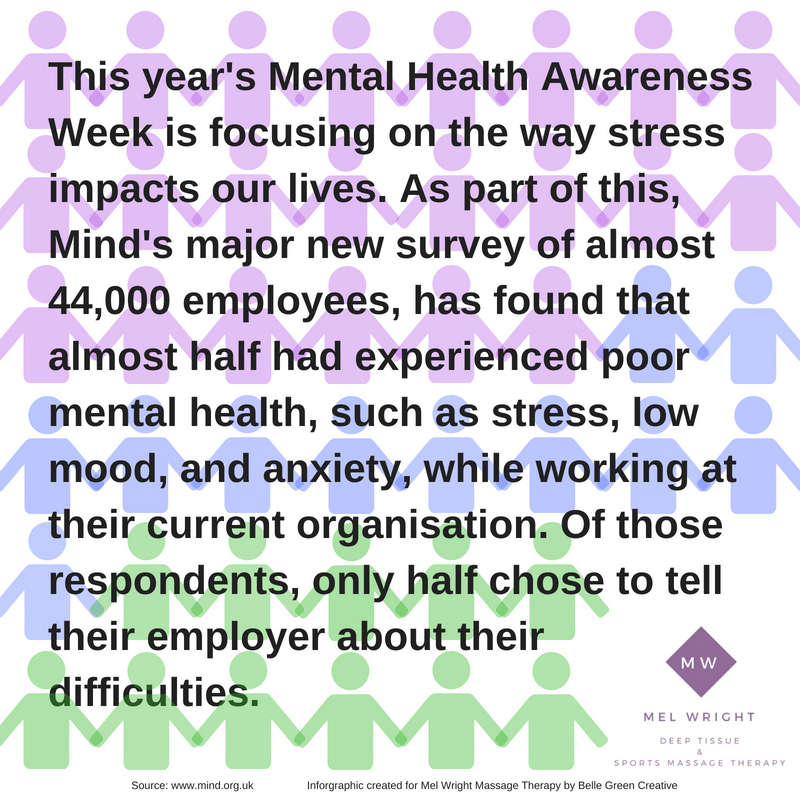
Approximately 1 in 4 people in the UK will experience a mental health problem each year [1] and in England alone, 1 in 6 people report experiencing a common mental health problem (such as anxiety and depression) in any given week [2].
Some months ago, a client of mine suggested to me that as part of my blog series I write something on the benefits for massage for those living with mental health conditions. I’ve had it written and sat on my PC for a while now, trying to decide if it’s the right thing to post, of any interest, or even any use to anyone, but with Mental Health Awareness Week taking place this week with a focus on stress, I thought perhaps I should.
Across the country there is an increased awareness of mental health conditions, which in turn is leading to a greater debate about their impact on those living with the conditions. In my opinion, with this comes the responsibility to be well informed if you are going to enter the discussion and not appear ill-informed, patronising or judgmental. I’ve thought long and hard about the request to put together a blog on the benefits of massage for those living with mental health conditions and I’m approaching this blog with some trepidation; because mental health conditions are as wide ranging as physical health conditions . I wouldn’t write about the benefits of massage for people living with sciatica, arthritis and/or high blood pressure in the same blog, so why would I try to cover stress, anxiety, borderline personality disorder or depression in the same post. Sadly its too easy for us to put all mental health conditions into one bucket and address them as one homogenous thing, rather than try to understand the difference of each.
Whilst I could write a series of posts on the benefits of massage for each different mental health condition there are two reasons I don’t want to take that approach, I don’t want to risk trivialising mental health conditions, extolling the virtues of massage in such a way that I write a sales pitch, and whilst I can read and research the topic(s) I don’t believe I would feel well enough informed on the breadth and depth of the subject to give it the care and attention it deserves.
What I’m going to talk about here is how stress, the focus of Mental Health Awareness Week and something we all experience to some degree at varying points in our lives, can manifest itself in our bodies without us recognising it as such. The client I’m writing about has given me their consent to write about them, but I’m doing so in a way that’s gender neutral and they can’t be identified from it, in fact on reading it back I can see several people I know in the description of this client, from my wife, to friends, clients and other family members.
The client concerned got in touch because they thought they may have trapped a nerve and for weeks they had been experiencing excruciating pain in their lower back that they thought may be a trapped nerve. As they walked down the path to the treatment room I could see the pain across their face; rating their pain, something I ask all clients to do if they are reporting pain, they told me that morning was feeling like a 7/10, whereas the day before had been a 9/10. Filling in their client form they seemed to be a generally fit, active and healthy person in their early-40s, and it was only later in the appointment that I thought back to them fidgeting while filling in the form and hesitating over where to tick yes or no on something.
Once they were on the table I could feel something different in their muscles to the description they’d given. To give them the treatment that their body was telling me it needed I had to address the nagging doubt in my mind that said don’t pry into someone’s private life, I bit the bullet and asked “ how are things in your life, do you think this pain could be stress related? ”. I was taking a risk asking the question, but it felt right. What I got was a look of (unnecessary) shame and relief – someone knew, but also someone reaffirmed something they hadn’t wanted to admit to themselves. We talked about their:
· home life children, stay-at-home parent partner, parent carer responsibilities, mortgage that was too big,
· work life - new job, progressing in their career, climbing the corporate ladder, taking on more responsibilities, never giving up, rarely switching off,
· social life – mostly business related from time to time, but who has time to spend with friends and have meaningful engagement, occasional texts and infrequent face to face contact were their default, and
· how the pressures they and others placed upon them had built up to the point they were feeling unable to cope.
Your muscles tense up to protect themselves from injury when you’re stressed and tend to release again once you relax, but if you’re constantly under stress, your muscles may not get the chance to relax with frequently or persistently tight muscles causing headaches, back and shoulder pain, and body aches. And so, with this particular client, I moved away from the area they were describing as the source of their pain and discomfort and focussed on giving a therapeutic, relaxing massage, working on all the muscles across their neck, shoulders and back where I could feel tension was being carried, but nothing to indicate a trapped nerve. As I talk about in one of my earlier blogs ( Massage & Relaxation ) massage isn’t just about manipulating soft tissue; it’s about therapeutic touch too. Of course, their stresses haven’t gone away from having a massage, but their self-assessed pain level had dropped afterwards, they carried themselves a little differently and I hope that by having someone recognise that they were stressed and that its ok to be stressed they might feel a little more capable of looking at how those pressures have built up and up and seeking out ways of making them manageable again.
If any of what I’ve written here feels familiar to you and you’d like to know a little bit more, I’d recommend:
· The NHS’ One You page,
· MIND , the UK charity working for better mental health for everybody are behind the Mental Health Awareness Week (14-20 May) and also provide a guide to massage for those with mental health conditions; and
· HeadsTogether who aim to promote positive conversations about living with mental health conditions.
And of course there’s always your GP. If stressed is becoming a long-term way of living for you, do seek out support mechanisms.
Best wishes,
Mel
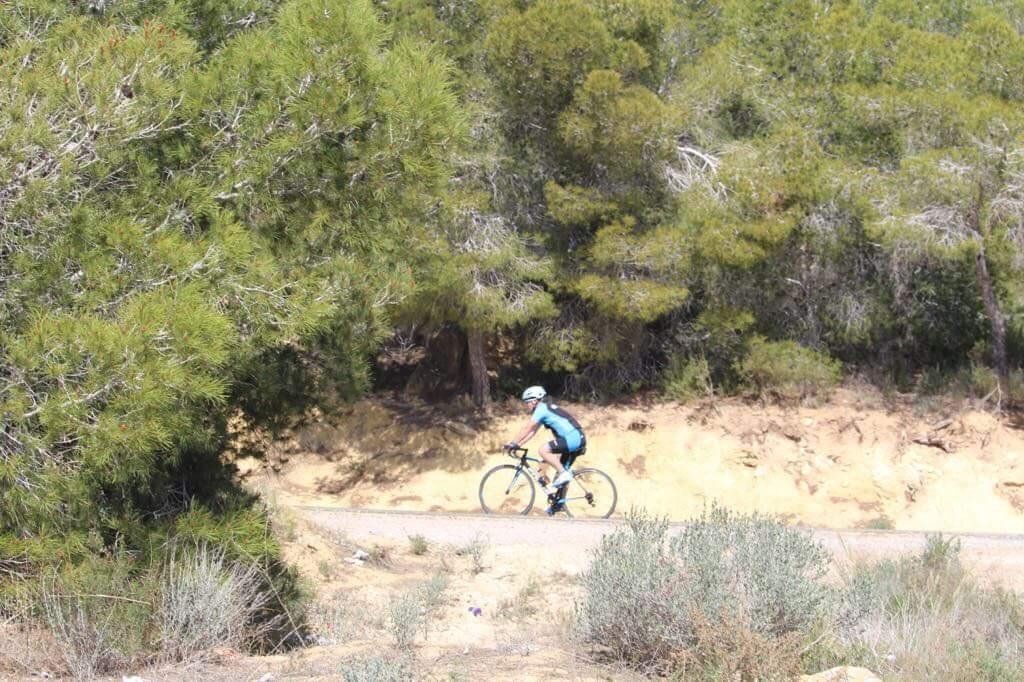
With my own Tour De Lanzarote with some friends coming up in July, I'd always planned on publishing a guide to common cycling injuries and how to avoid them to coincide with the start of the Tour. However, when I got the invitation earlier this week to work the Sportive on Sunday in Leeds, the impetus was really on to get this finished!
The Sportive will take place on Sunday 6 May alongside the final stage of the Tour de Yorkshire pro race, with the (6,000!!) amateur cyclists who've entered getting to cycle on the same day, same roads, with the same crowds and finish line, as the pros - in Yorkshire. What could be better! They also get to enjoy the after-ride events, and I'm hoping that we get to welcome plenty of riders to our Massage Station on Cookridge Street afterwards. There'll be at least four Massage Therapists set up there, ready to give you a post-ride rub down, of either 15 minutes (£15) or 30 minutes (£25). If you do get to see us, I'm sure you'll find it worthwhile.
Unless you fall off, cycling is a sport blessed by its body-friendliness! Riding big miles is more likely to get you fit than fractured. But, like any endurance sport, cycling can produce a range of niggling aches and pains, which if left untreated can become more serious. To give your pain a name and point you down the right road to recovery, we’ve listed the 8 most common cycling ailments , their most likely causes, and how to go about fixing them.
Many cycling overuse injuries can be prevented, remember A–B–C. Be assessed for underlying ALIGNMENT issues such as muscle weaknesses, flexibility, leg length discrepancies and being flat-footed. Then check you have the correct BIKE set up, correct technique and cycling posture. Finally, CONDITION yourself with appropriate strengthening and stretching exercises and progress your training moderately and always, always listen to your body!
So, whether you're cycling in a club, for fun, or just starting out on wobbly wheels, enjoy it, look after yourself and as always, get in touch if you think I can help.
Mel
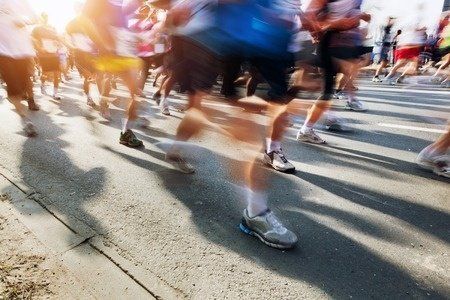
Do you dream of being that runner where every step of every mile is 100% pain free? No aches, no twinges or niggles, no lingering soreness from yesterday’s session. Well, you are not alone; research shows that as many as 79% of runners get injured at least once during the year. Think about that number for a moment; nearly 8 out of every 10 runners you see at your next race have been or will be injured sometime that year.
Think of running pains in terms of a spectrum. At one end you have severe, full-blown injuries, we’ll name that the red zone, which includes stress fractures that require time off. The other end, where you're in top form, is the green zone. Mild, transient aches that bug you one day and disappear the next sit closer to the green end. Unfortunately, many runners get stuck in the middle, in the not-quite-injured but not-quite-healthy amber zone. Your ability to stay in the green zone depends largely on how you react to that first stab of pain. Often a little rest now, or reduction in training mileage and intensity, with some treatment, can prevent a lot of time off later. Developing a proactive long-term injury-prevention strategy, such as strength training, stretching, regular massage and foam-rolling can help keep you in the ‘green.’ Physical therapy is a lot like homework, not all of us like having to do it, but if you don't do it, you’re sure to get in trouble at some stage!
So, What Causes Running Injuries?
There are a lot of theories as to what causes
running injury but it seems the answer is fairly obvious: running! Research shows that “running practice is a necessary cause for RRI
(Running Related Injury) and, in fact, the only necessary cause.” With running being the key risk factor for
running injuries what other factors influence risk? Historically a lot of
emphasis was placed on intrinsic factors like leg length discrepancy, pronation
(flat foot), high arches, genu valgus/varum (knock knee or bow legged) and external
factors like ‘special’ running shoes being
stability shoes or anti-pronation shoes and lack of stretching. However, recent
studies have shown there is no one specific risk factor that has a direct
cause-effect relationship with injury rate or injury prevention. Whilst warming
up, compression garments, acupuncture and massage have some evidence in
reducing injury rates it is all a little grey. Leaving you with a
multifactorial buffet of probable contributing causes to running injuries.
There is however one specific factor that has
been proven, and that is training error. Estimates suggest that anywhere from
60 to as much as 80% of running injuries are due to training errors. Runners become injured when they exceed their
tissues capacity to tolerate load. A combination of overloading with inadequate
recovery time. Poorly perfused tissues, such as ligaments, tendons and cartilage, are
particularly at risk because they adapt more slowly than muscles to increased
mechanical load.
Factors that affect how much training load a runner can tolerate before injury will also have a role. There are 2 key factors that appear to play a part in this – Body Mass Index and history of previous injury, especially in the last 12 months. While high BMI and previous injury may reduce the amount of running your body can manage, strength and conditioning is likely to increase it. There is a growing body of evidence supporting the use of strength training to reduce injury risk and improve performance. Training error and injury risk share a complex relationship - it may not be that total running mileage on its own is key but how quickly this increases, hill and speed training. The old saying of “too much, too soon” is probably quite accurate. Injury prevention is really a ‘mirror image’ of the causes of an injury. So, if you understand the primary reasons for getting injured then you are heading in the right direction to staying healthy this running season.
We
have produced a series of prevention and treatment guides for the 6 most common
running injuries which you can download here.
What are The Most Common Injuries to be Aware
of?
Body tissues such as muscles and tendons are continuously
stressed and repaired on a daily basis, as a result of both 'normal' functional
activities and sport. An overuse injury often occurs when a specific tissue
fails to repair in the time available, begins to breakdown initially at
microscopic level and then over time develops into a true injury. So, the first
time you feel a soreness, a stiffness or a pain is not necessarily when it all
began.
The most common injury is ‘runners knee’ or
patellofemoral pain syndrome and accounts for over 40% of running injuries.
This is followed closely by plantar fasciitis, achilles tendinopathy and then
ITB (iliotibial band syndrome), shin splints and hamstring strain. These
injuries generally need complete rest or at least a reduction in training
volume and intensity. Followed by physical therapy to promote tissue healing
and mobility. Although these are overuse injuries there is frequently an
underlying muscle weakness and/or flexibility issue that needs to be addressed
with specific rehabilitation exercises. Over the coming month, we’ll be
publishing our prevention and treatment guides for the following running injuries here:
· Medial tibial stress syndrome (shin splints)
· Patellofemoral pain (runner’s knee)
· Achilles tendinopathy
· Iliotibial band syndrome
Alongside, this blog, we’re publishing the first in our series of injury and performance guides on Plantar Faciitisand Hamstring Strains.
While guidance can be given, what's on our website is general in its nature, whereas individual complaints may need individual attention. If you do pick up an injury (including 'tightness' 'irritation' or 'niggle') that you’re worried about then we can help, the sooner it’s treated the better.
As always, if you’ve read something here and think I might be able to assist you, do get in touch.
Mel
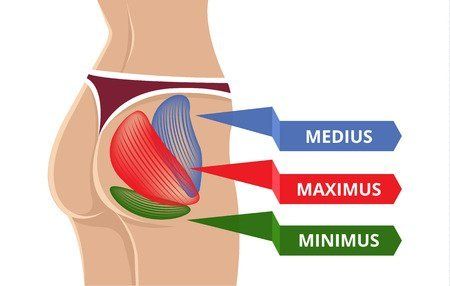
Have you ever thought of having glute work as part of your massage? Yes, your buttock muscles! They’re a hugely important muscle group, we use them in most things we do with our bodies and they get a good work out with every step we take so to leave them out during a massage makes no sense! We’re just a bit reserved, because, well, it’s our bum! But to a professional massage therapist your glutes are just like your calves, quads, trapezium or deltoids – muscle that needs working on.
The gluteals are a group of muscles that sit on the posterior hip. They include gluteus maximus, gluteus medius, and gluteus minimus. You should think of these muscles not as your own personal comfy seat cushion, but as the connection between your upper and lower body. Your glutes help support your body when you stand, help you push off the ground, and give you better balance in general. When your glutes are strong, every activity you do, from running to golfing to just walking, is positively impacted. For this reason some of us massage therapists think glutes are the most important part of your massage.
Your glues perform the action of extending the hip. This is taking the leg behind you. The gluteals are working all day, every day. Tight gluteals may be the cause of conditions such as low back pain, hips that feel stiff, hard to find comfortable sleeping positions, pain going down the back or side of the thigh and down to the ankle. Sore hips in later months of pregnancy may be relieved with massage in this area. Notice next time you’re walking if your toes point straight forward as you take each step. Many of us have one if not both feet where the toes point outward as we walk. This could be due to overly tight gluteal muscles.
Because you’re packing three muscles (plus your piriformis) into a fairly compact area, the gluteals are a very dense muscle group so there are certain ways to massage them for you to get maximum benefit. Generally, I’ll start by warming up the area with broad, full strokes. It doesn’t work to go into these dense muscles too quickly. They are strong and will reflexively tense to the point that no progress will be made if they’re not warmed up first. After the area is warmed up its time to relax the deeper layers of this group, where I can I prefer to use my hands, mainly thumbs to keep contact with to muscles and feel their feedback, but don’t be surprised (as with all deep tissue massages) to find fists, forearms and elbows being used as the tools to manipulate your muscles. There are four layers of muscle in the buttocks and the gluteus maximus is the first. After the maximus releases, your therapist can move to the gluteus medius and then gluteus minimus. Then it’s down to the deepest external rotators – this is where the piriformis lies, and this little, often unknown muscles, muscle is often the trouble maker for sciatica type pain.
If you’ve got this far with reading the blog, you might be thinking “how is this area going to be massaged?” Let me explain what draping is. No matter what kind of massage you book in for with me you will be professionally draped at all times. This means covered with a sheet so only the area being massaged is uncovered. Your glute massage can be done as an extension of your back work or leg work. Most commonly, I’ll work the glutes as I’m doing the back of the leg with the leg uncovered all the way to the top of the hip. The best way to get the most from your massage is to ensure I can access the skin over the muscles and the fewer clothing obstructions there are the better. To get the greatest benefit from any leg, lower back or gluteal massage I would advise (if you’re comfortable with it) wearing pants, bikini bottoms or speedos or at the least a pair of loose shorts so I can get to as much of the muscle as possible.
After receiving this type of massage your hips may feel freer, your legs swing easier, pain may be gone, or you may feel like your floating as you walk. You may come to love gluteal massage. It not only feels good but should be a necessity of every massage you get.
As always, if you’ve read something here and think I may be able to help you do give me a call. And, if you book in for a massage and are asked whether you want glutes included, say “yes!” and see what a difference it makes.
Mel

Whilst many European skiing slopes have been open for a number of months already, we’re now approaching the peak time when those Brits amongst us who love to hit the slopes, or want to try it out for the first time are getting ready to pack our bags heading off to the Alps, Pyrenees or maybe further afield to try out the less known slopes of Slovenia, Bulgaria or Montenegro. Most of you will leave with a joke from family or friends about not coming back in plaster, but what about the other aches, pains and little niggles you might pick up when you’re doing prolonged, intense exercise over the period of a week or so, when the most you might normally do at home is a bi-weekly run, fitness class or gym session…
Sports massage is a widely used treatment for injury rehabilitation and prevention, as well as performance enhancement. A lot of amateur sports people tend to understand the benefits of deep tissue and sports massage and are increasingly making up a greater number of my clients than non-sports-people. However, only recently has sports massage started to be seen by amateur skiers as a way to prevent injuries, treat little niggles and enhance the enjoyment of their days on the slopes.
A lot of skiing injuries are acute or traumatic injuries such as ligament sprains and fractures, caused by a fall and as a result there is little you can do to prevent them. However, prior strengthening, balance exercises and sports massage can all help to develop a better sense of body awareness and positioning.
The type of injury which sports massage can help prevent is more overuse or inflammatory in nature, which tends to build up over time due to repeated, unaccustomed forces on the joints and soft tissues.
Skiing is a great pastime enjoyed by millions every year. Sports massage is an effective tool to make sure that your body is ready for the challenge and that aches and pains don’t hamper your holiday, or make you feel like you need another afterwards just to relax!
As ever, if you think I can assist you do give me a call,
Mel
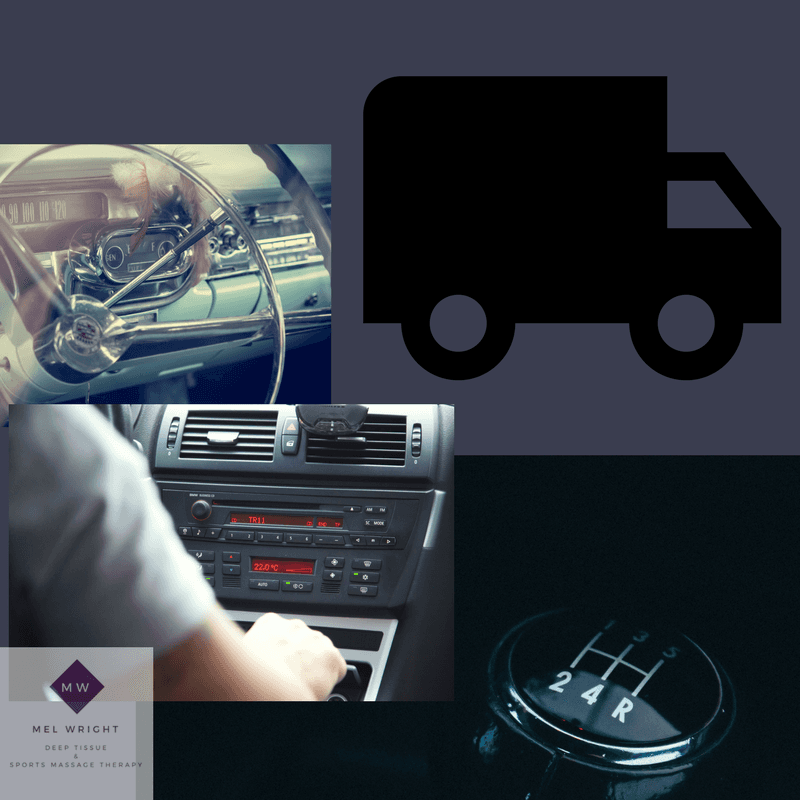
During the last month, two lorry drivers came to see me on separate occasions, both with the same problem.
The first one came in with a problem in his left shoulder causing pains down his arm. A week or so later another lorry driver came presenting almost exactly the same problem.
Two people from the same trade or profession with the same dysfunction is hardly a rare phenomenon, but it’s certainly interesting and made me think about the office workers I’ve worked with who all displayed similar back aches and pains ( Straighten Up & Give Your Back a Break ) and do a little bit of research.
Having done a little HGV driving in my youth when I was in the Army, I dredged up some old memories of the position in the cab, how I would sit and move. And then it came to me, I would hardly move. Comparing my memories to how the two lorry drivers described their days I was able to figure out what was going on. It turns out that both of them are driving for long hours several times a week and spending much of that time resting their left hand on the gear stick. Or at least, they were both somewhere between hovering above the gear-stick and partially resting their left hand on the gear-stick. It turns out that neither of them were completely relaxing their arm on the gear. They were holding it in tension ready to change gear when they needed to.
This meant that the muscles in their shoulder, arm and wrist were all contracted ready for action. It might not sound much, but when the arm is held in a state of "readiness" for several hours a day, there are considerable effects on the muscles. In the two cases, the effects were similar, though subtly different because of their age, build, and precise positioning of the arm.
Isometric muscle contraction : this is where muscles are kept in a contracted position, without movement.
As with more recognisable isometric muscle contraction (like bicep curls), the effect of this kind of muscle contraction is to build up the muscle. So, keeping the arm out, hovering near, but not quite resting on the gearstick for several hours a day, built up muscle in the shoulder and arm.
In 2014, the British Journal of Sports Medicine published a study by Allen et al , which showed that in isometric muscle contraction more damage occurred when the muscle was held lengthened out rather than shortened.
In other words, more muscle damage will occur with your arm stretched out towards the gearstick than having it bent resting on the steering wheel (10 to 2 like we were all taught).
With one of the lorry drivers, it was simply a case of massaging the muscles to relax them. With the other, though, some of the muscles at the back of the shoulder had become so big that they were restricting the space available for one of the nerves that runs down the arm, so a bit more work was needed.
As ever, if you think I can help, give me a call,
Mel
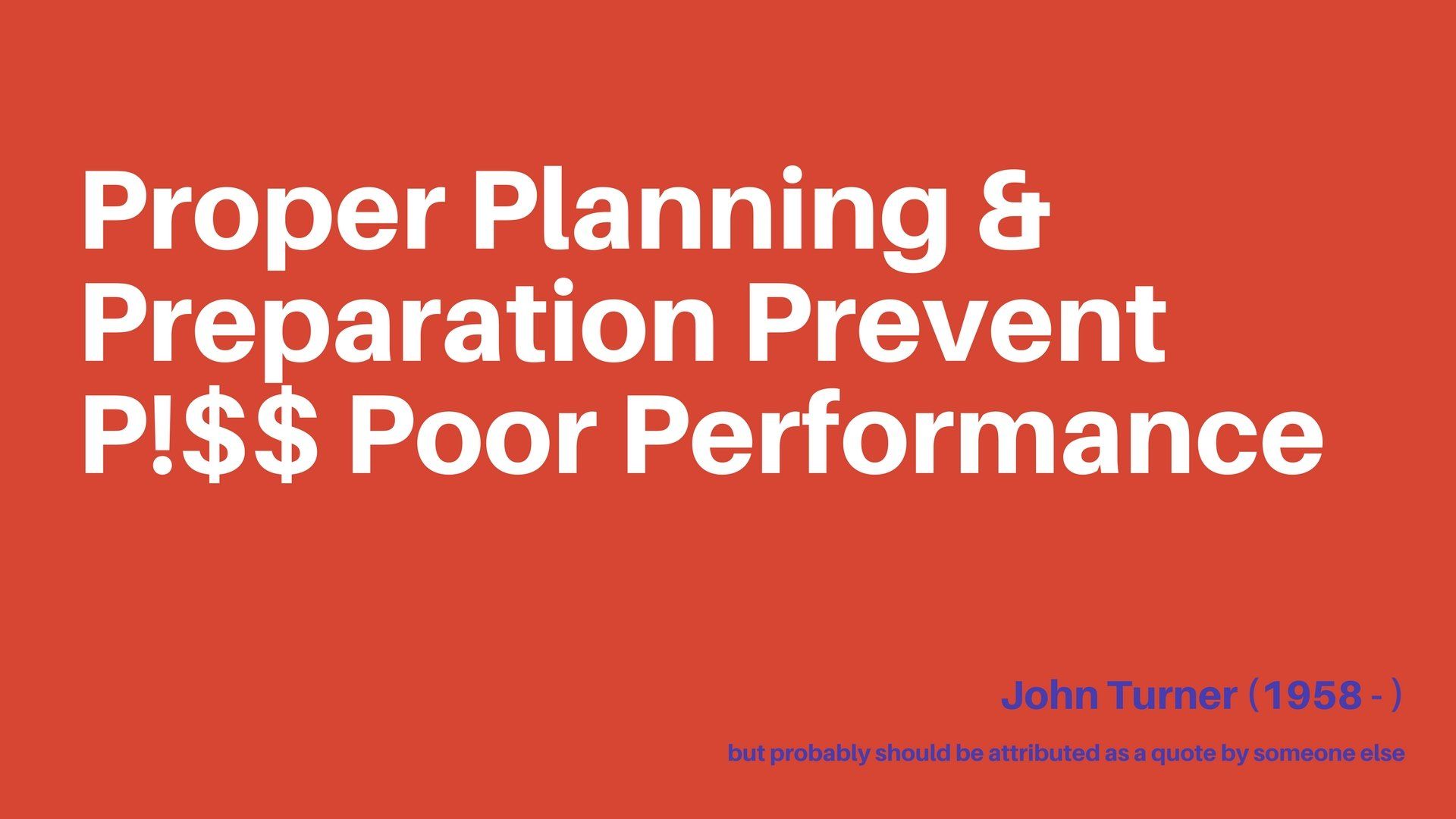
We make resolutions and decisions about the things we want to change in our lives throughout the year, but a special focus is given to them at this time of year because the New Year is seen as a blank slate, a time to start afresh and it’s been that way since at least Babylonian times (roughly 3,900 years ago).
If resolutions are your thing (there’s still too much chocolate and cheese in my fridge for the healthy eating to have started yet), then here are a few reminders of the things you probably already know to help you succeed in your healthy goals, along with a favourite saying (below) from my father-in-law which can be used and appropriate in so many contexts and particularly when trying to stick to a new plan.
Food
If you're looking to start eating more healthily, then just do it, you’re in control of what goes into your basket at the supermarket, unless of course you do online shopping and then you’re likely to get a Terry’s Chocolate Orange if they can’t find your requested bag of satusmas!
Don't go for the latest fad diet, book or clique. Find a coach or group (you know the household names), someone who's been around the block and has a reputation to worry about. In our increasingly web-connected world, the chances are that you'll think you can do a bit of research and do it by yourself. Honestly, you can't. You need a bit of support, even if it’s a friend or family member helping out with the cooking, portion control and letting you know when they can see the difference your efforts are making.
Drink
There are 2 things to do when it comes to drinking – drink more and drink less, but probably not in the way you actually want to…
Drink less: So many of us are stressed for so much of the day, that a drink when we get home can really help to relax us. There's nothing wrong with that of course, but it's worth comparing your weekly consumption with the recommended limit , which is:
- 6 glasses of wine a week, OR
- 6 pints of beer or lager, OR
- 5 pints of cider
Sorry, there’s an "or" in the middle of each of those, not an "and"!
Drink more: If we could do with cutting down on booze a bit, most of us could do with upping our intake of water. If you're wee is clear, then you're drinking enough water during the day; if it's not then you're dehydrated and your body needs more and there's more info on the Keeping Hydrated blog.
Exercise
We all know we need to move more, but how many of us truthfully do enough exercise week in week out. Here are a few really important points:
- If you're older than you care to admit and haven't run for a decade, don't think you can do a 10K run. You can't, so start slow. The NHS Couch to 5K programme is a fantastic way to get back into exercise.
- Stretch . You won't want to. You won't know if you're doing it right. But just do it. Always stretch before and after exercise.
- Think . Seriously, think about what you're doing to your body when you exercise.
- Build your fitness up slowly
- Take a break from exercise a couple of days a week
- Make sure you've got the appropriate kit – a battered old pair of trainers from the back of a cupboard or bike you’ve dug out of the back of the garage without giving any TLC to aren’t going to help you too much
- Stretch (yes, I know I've mentioned that before, but it's important, so it's worth putting in twice!)
Maintenance
Like other complex systems, the human body needs maintenance: especially when it's under strain.
Strain could be the stress of work, or the novelty of an exercise programme. Either way, you're likely to need your muscles attending to at some point.
When you do, let me know , and perhaps take advantage of my New Year Offer.